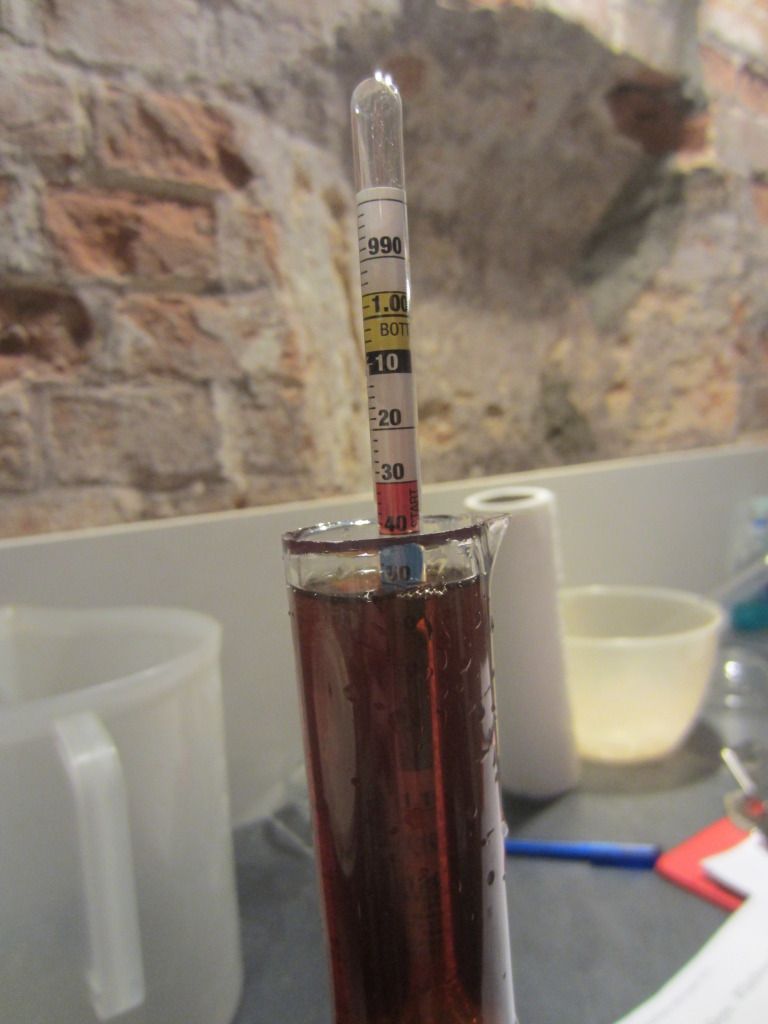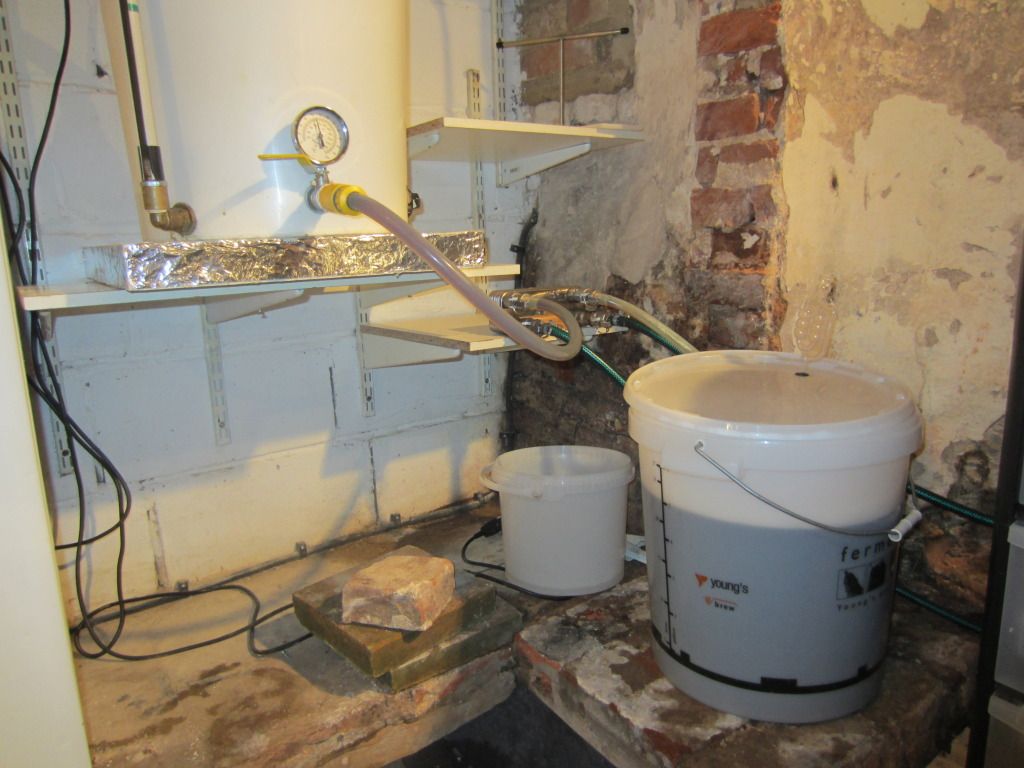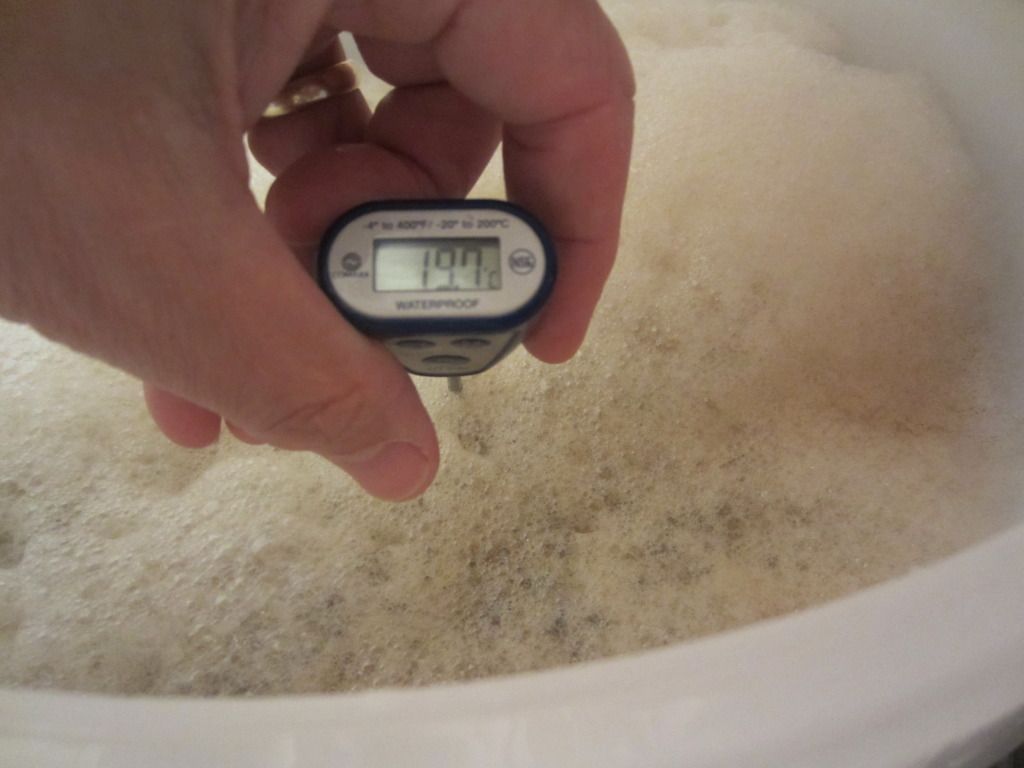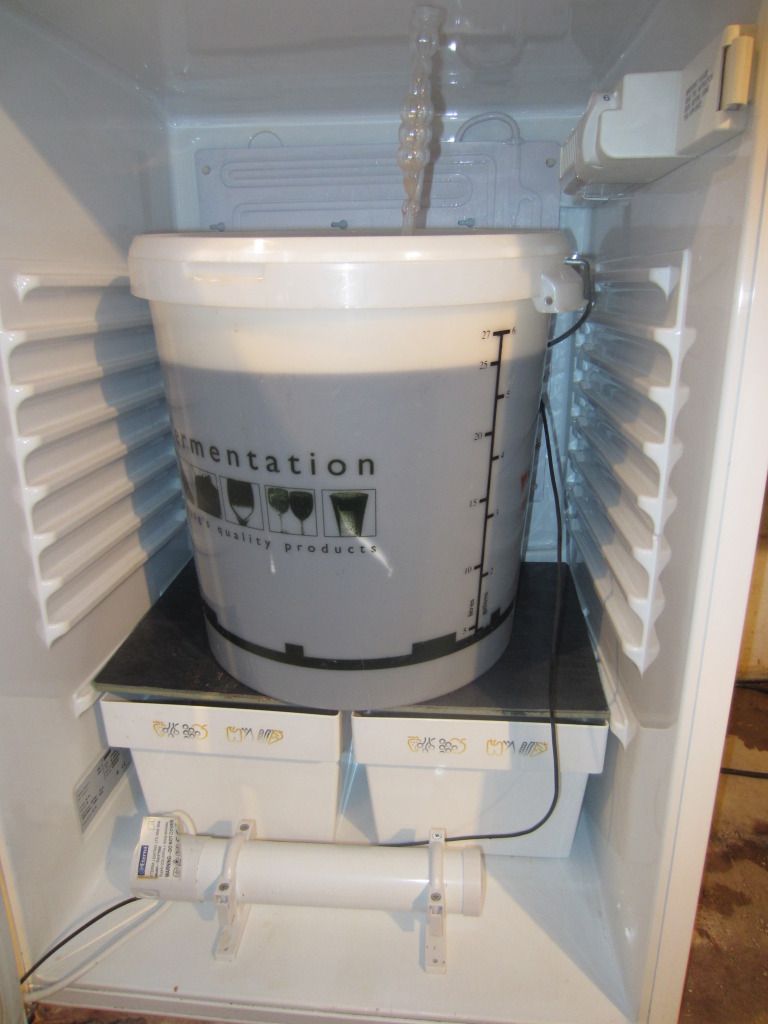The malt is kilned over oak to around 550 EBC and is a brown porter malt with no or little diastatic power. This lead me to debate the value of mashing this but I decided to do so as this was the recommendation. My reservation arose from reading and listening to Gordon Strong on the usual practice of mashing all grains together regardless of the fact that there are obviously no enzymes left to convert the malt sugars, and that mashing at higher temps will extract harshness and bitterness from roasted malts.
Another aspect to the recipe was multi gyle boiling and the use of "aged" hops. Ben had worked out what the bittering potential was and suggested a 1:1 IBU ratio. As for the boiling his own experiments suggest that you can achieve the "intire" effect with a 90 minute boil. From this it is arguable that I haven't exactly replicated the recipe, but as homebrewers we know we can only ever really get close even to modern brews, given our limitations. For me the key to the brew is how the brown malt performs, kilned as it is over oak.
Recipe
4.00 g Gypsum (Calcium Sulfate) (Mash 60.0 mins)
4.150 kg Pale Malt, Maris Otter (5.9 EBC) 73.5 %
1.500 kg Brown Porter Malt (circa 19th century) - Oak (550.0 EBC) 26.5 %
60.00 g Goldings, East Kent [7.20 %] - First Wort 90.0 min 48.4 IBUs
1.0 pkg Fat Cat Yeast (Fat Cat Brewery #Charles Wells Brewery)
Beer Profile
Est Original Gravity: 1.050 SG Measured Original Gravity: 1.051 SG
Est Final Gravity: 1.015 SG Estimated Final Gravity: 1.015 SG
Estimated Alcohol by Vol: 4.6 %
Bitterness: 48.4 IBUs Calories: 481.9 kcal/l
Est Color: 79.7 EBC
Brew length 25 litres
The mash is obviously important for this brew as I want it to have a lot more body than my standard beers so mashing high was the key. Doughed in at 75.8c with a mash target of 68.9 (started at 69.4 finished at 68.
I took pictures but unfortunately somehow lost the early mash shots which are the most interesting. Sorry for the rather boring ones to follow.
Post boil trub, it was thick & dark

OG shot

Crash cool

I like a low start and it ended up a little higher than usual as I had a problem with the chiller. I hadn't opened up the valve for running the warm water away and so it went into FV at about 30+ before I noticed.

Tucked up set at 20c to encourage a litle ester. Will raise by 2 degrees when fermented out to reduce diacetyl.


